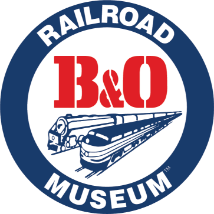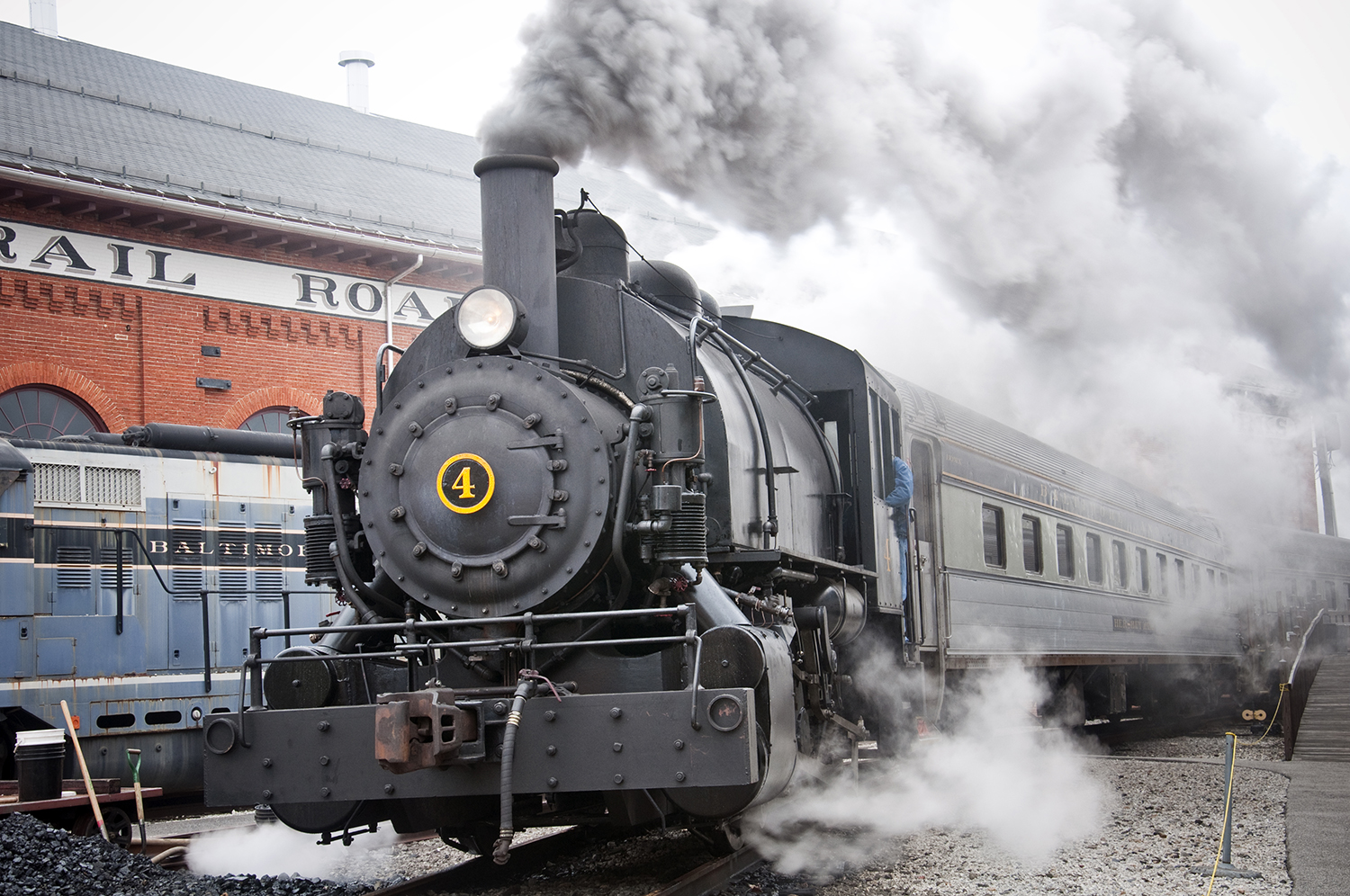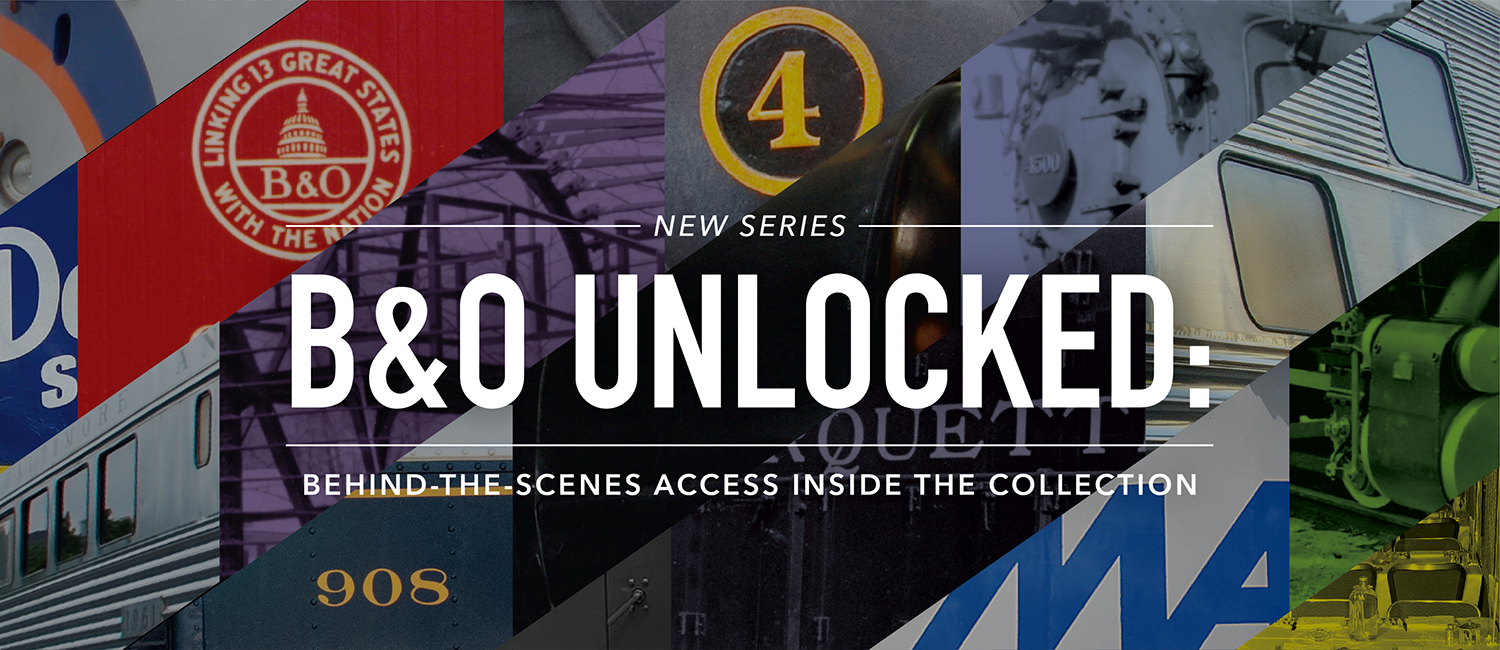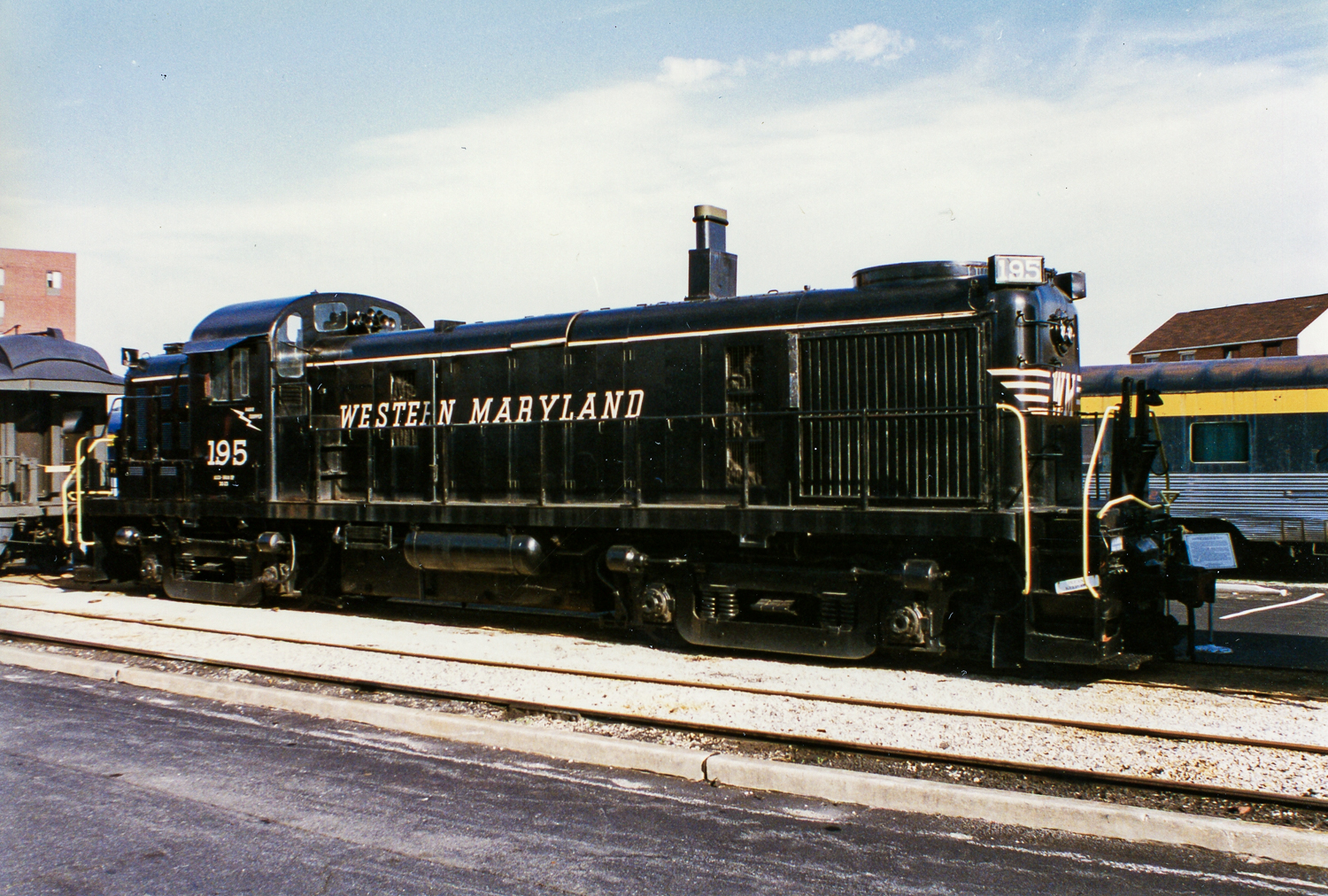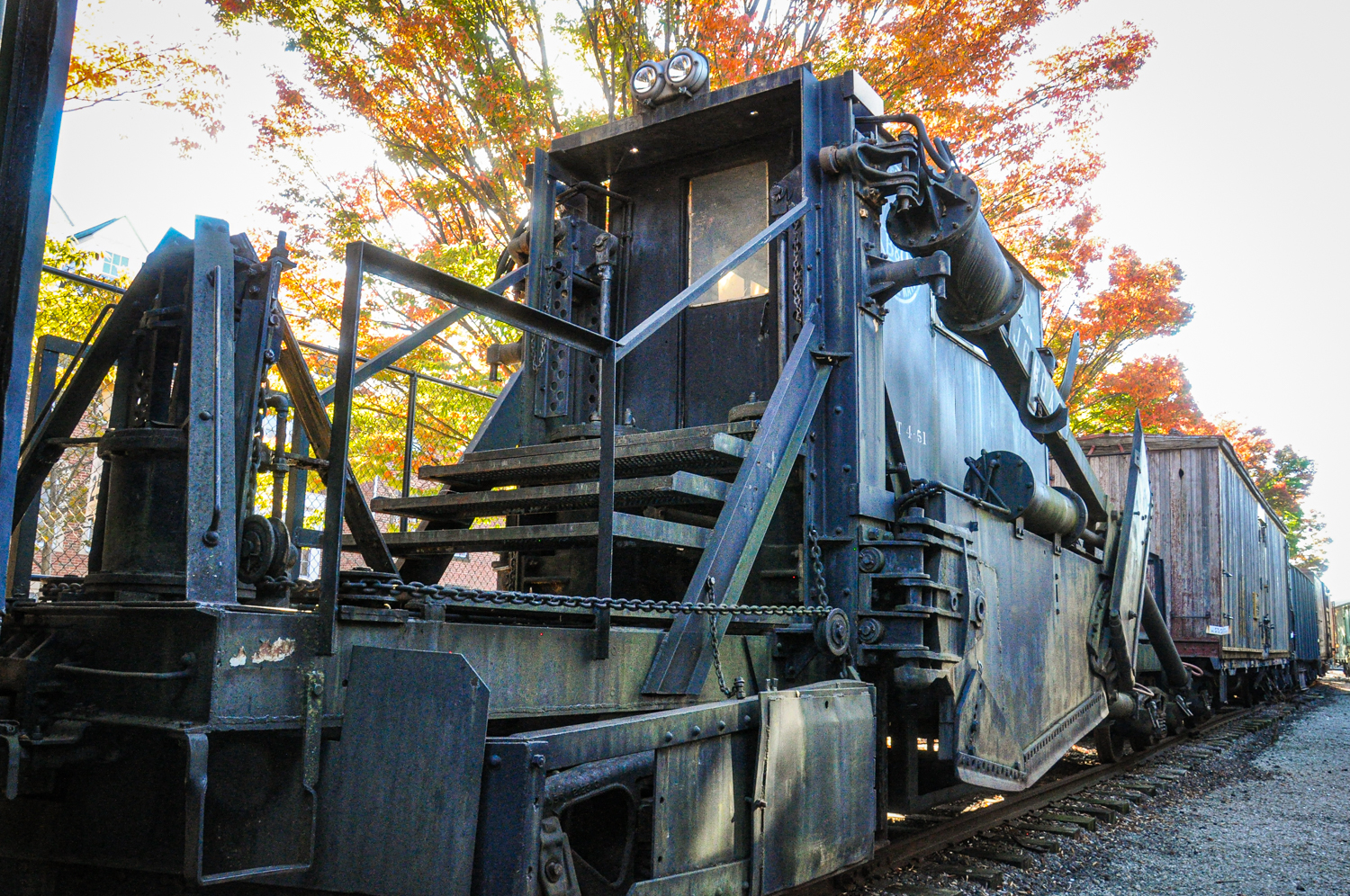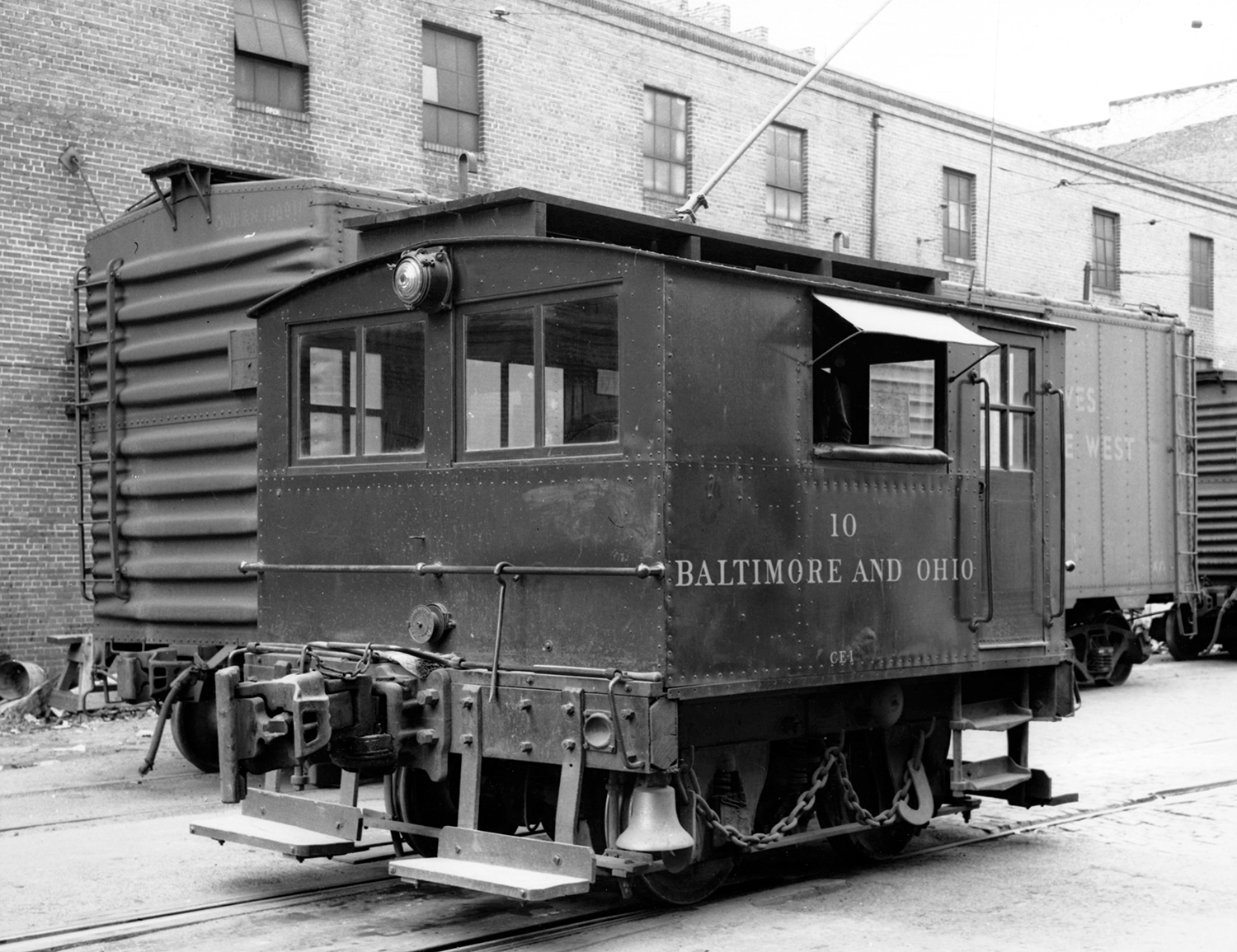Quick Facts
| Name | "St. Elizabeth" |
|---|---|
| Manufacture Date | 1950 |
| Railroad Of Record | St. Elizabeth’s Hospital, US Department of Health, US Army, Cass Scenic Railway |
| Manufacturer | H.K. Porter Company of Pittsburgh |
| Rolling Stock Type | Steam Locomotive |
Description
The SEH No. 4 — also known as the “St. Elizabeth” or “Little Lizzie” — is a specific type of switcher known as a “saddle-tanker.” These tenderless locomotives carry their water in a saddle tank above the boiler, and they keep their fuel in a small bunker behind the cab. During the first half of the 20th Century, thousands of saddle-tankers were used in mills, mines, quarries, power plants, and logging sites across the United States.
The “St. Elizabeth” was built in 1950 by the H.K. Porter Company of Pittsburgh, one of the largest manufacturers of industrial locomotives in the United States. Between 1866 and 1950, the Porter Company produced roughly 8,000 steam locomotives. The St. Elizabeth was the last engine ever produced by the company, and one of the last steam locomotives produced in the United States.
The acronym “SEH” stands for “St. Elizabeth’s Hospital.” “Little Lizzie” was first used by the Federal Security Agency to pull coal hoppers to and from St. Elizabeth’s Hospital in Washington, DC. Back then, coal was used to power the hospital’s boiler plants and heat the facility.
The SEH No. 4 was acquired by the U.S. Department of Health in 1968, after St. Elizabeth’s Hospital switched from a coal-based to an oil-based heating system. The following year, the locomotive was given to the U.S. Army and sent to Fort Eustis, Virginia, where it was used by members of the 714th Transportation Battalion – the last railroad battalion in the United States. It was here that the locomotive received a new number, No. 714, to match the name of Army unit. The No. 714 was used not only for military drills, but also to entertain the children who lived in and around the Ft. Eustis military base.
Around 1972, the Fort Eustis facilities were closed, and the 714th Transportation Battalion was disbanded. A newspaper at the time declared that the U.S. Army had gotten out of “the business of training railroading soldiers.” The No. 714 was sold to the Cass Scenic Railroad, a Chessie-owned railroad in West Virginia, where it would continue to operate until its retirement in 1980.
Virtual Tour:
Visual Tour Description:
Exterior
The exterior of the St. Elizabeth is primarily painted black. The front circular medallion has a yellow border and a yellow number four at the center. There is also a yellow four painted on both sides of the cab and on the back. The smokestack is painted a dark grey shade as is a narrow cylinder. Some dials and valves are painted a dark red. As a switcher, the SEH is smaller and lighter than most steam locomotives, it is shorter both in height and length. A circular light is attached to both the front and rear.
Interior
The SEH’s cab interior is also painted black with dials and valves painted dark red to stand out. The interior of the cab is a rather tight space, mostly filled by the tall round firebox. The cab as two rectangular windows on either side and four along the back.
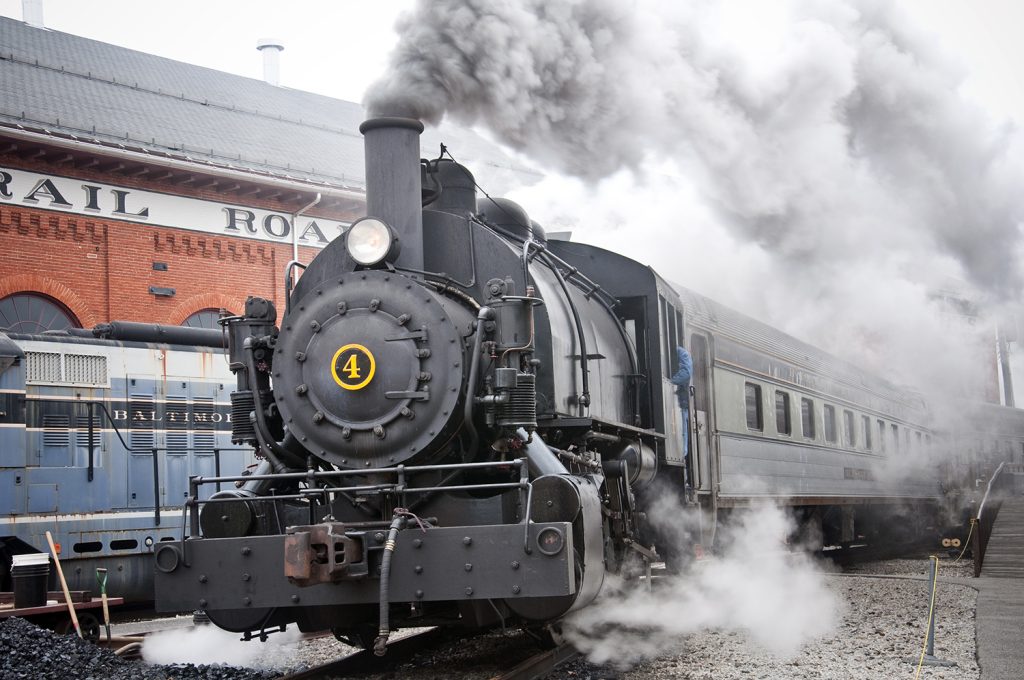
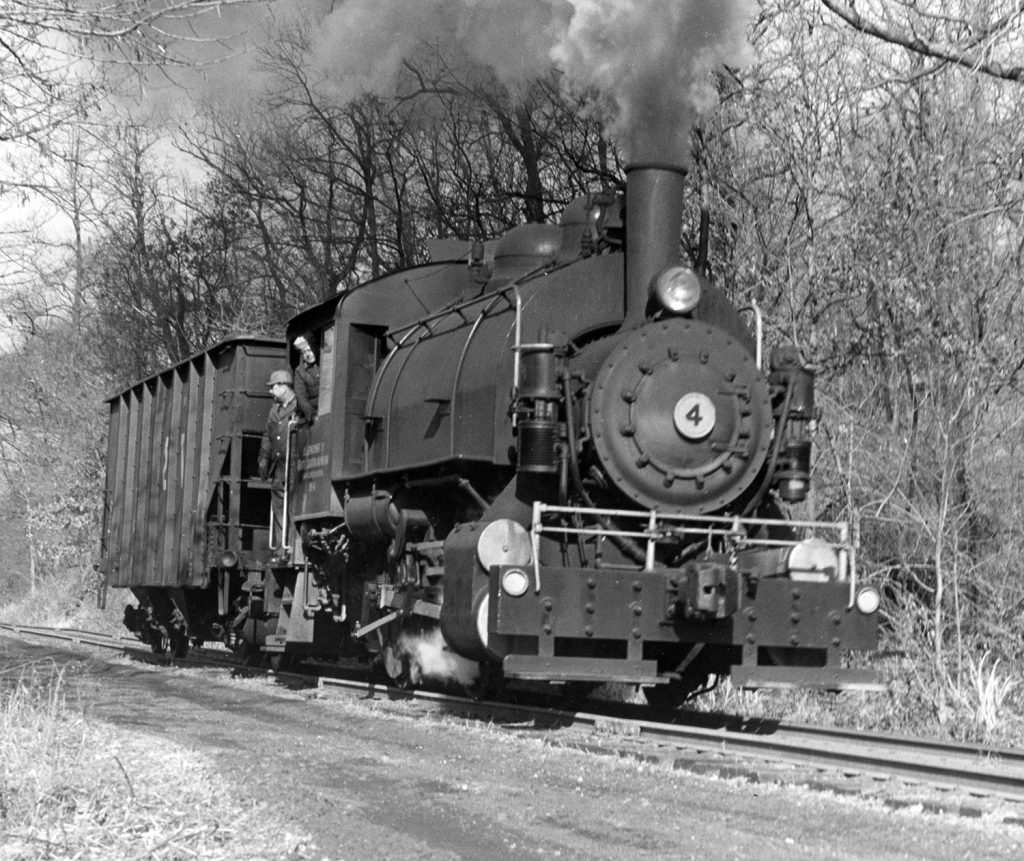
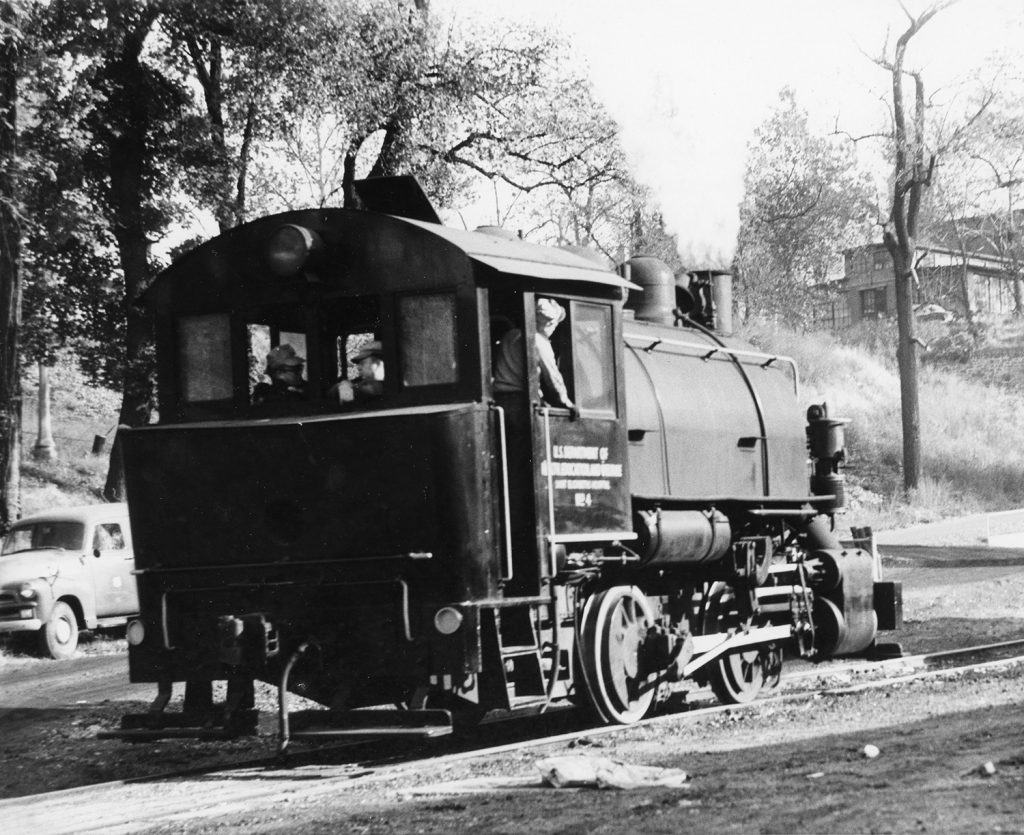
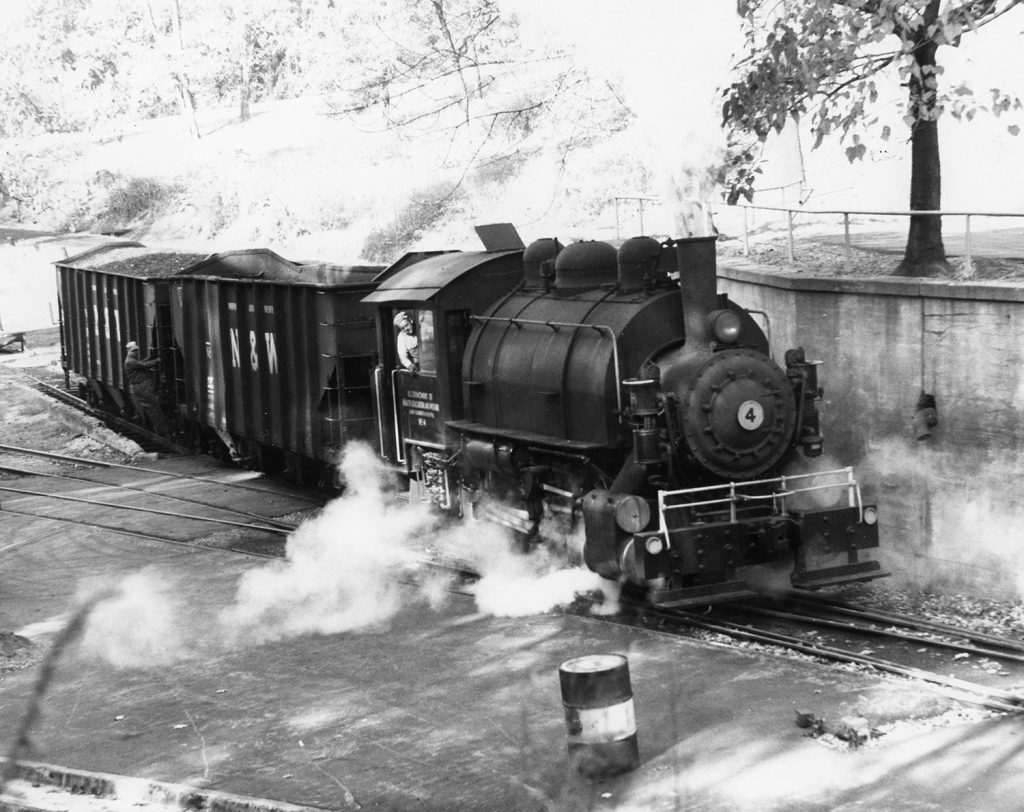
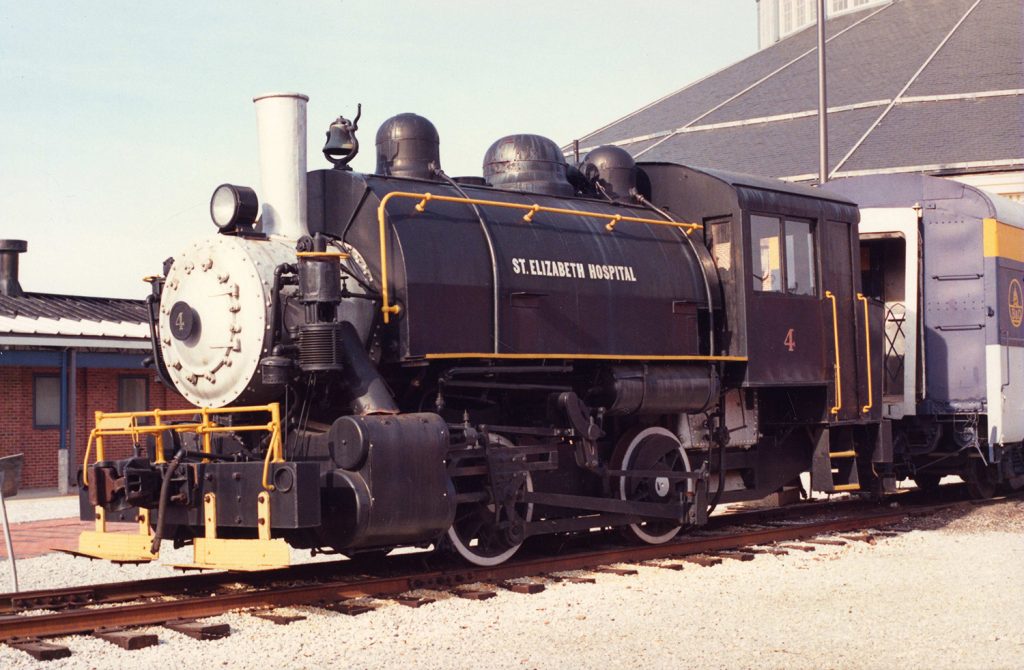
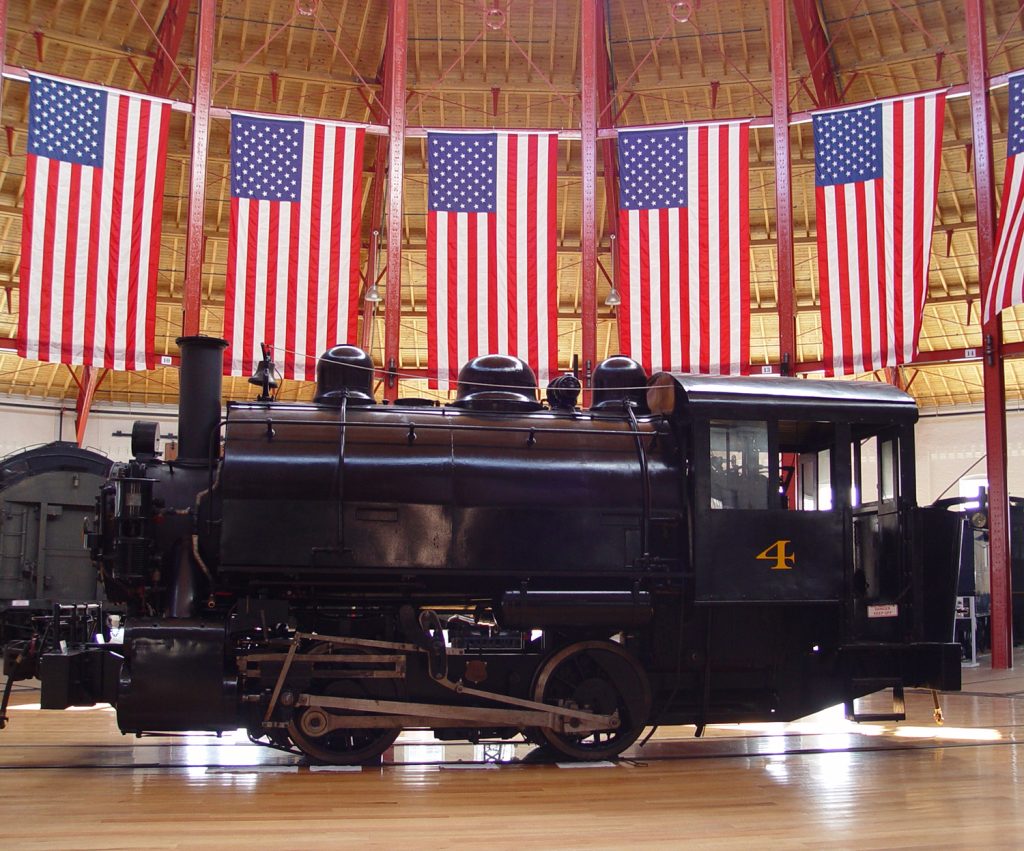
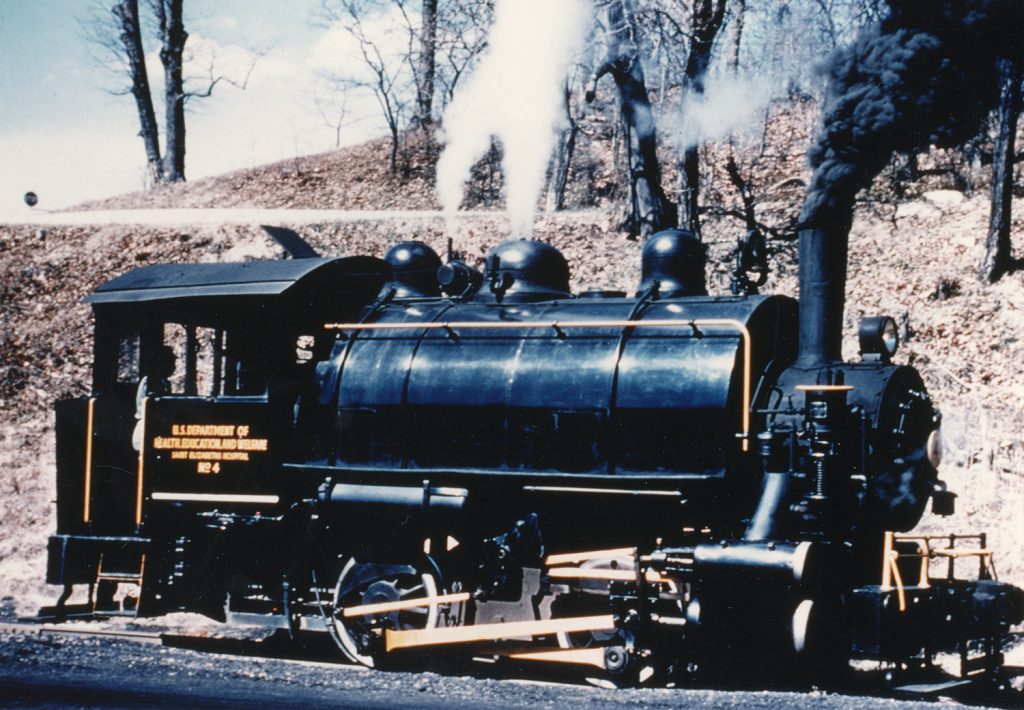
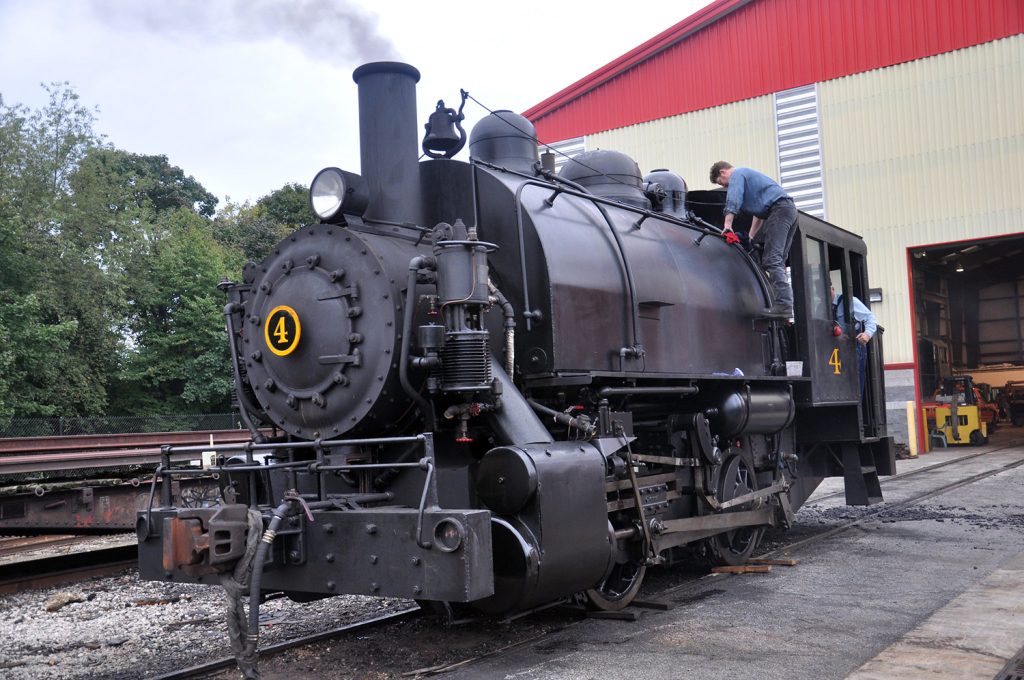
Can't Get Enough?
There’s even more to explore. Check out this and other unique pieces from our collection.
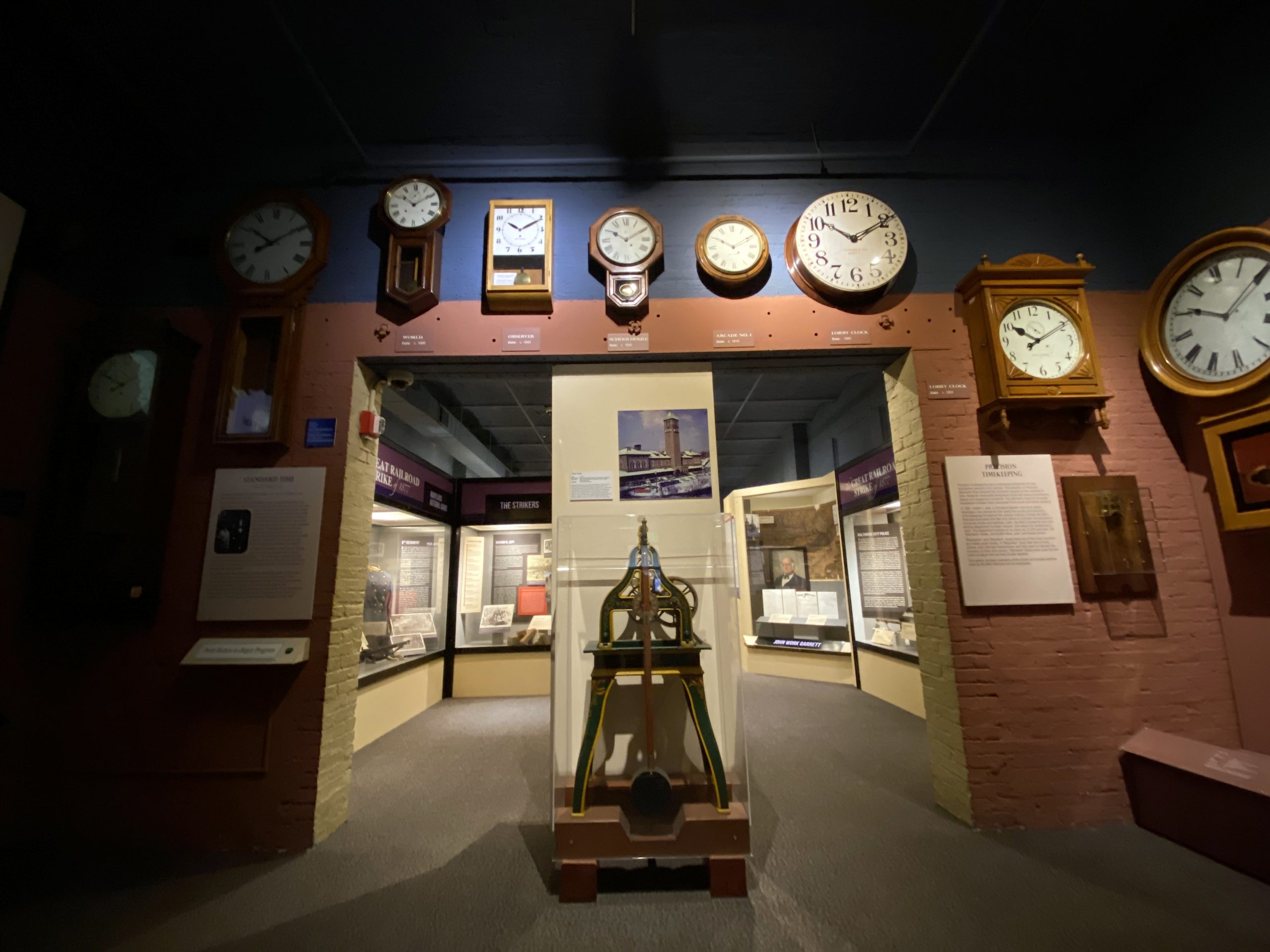
Did You Know?
Railroads made possible the standardization of time in the United States.
